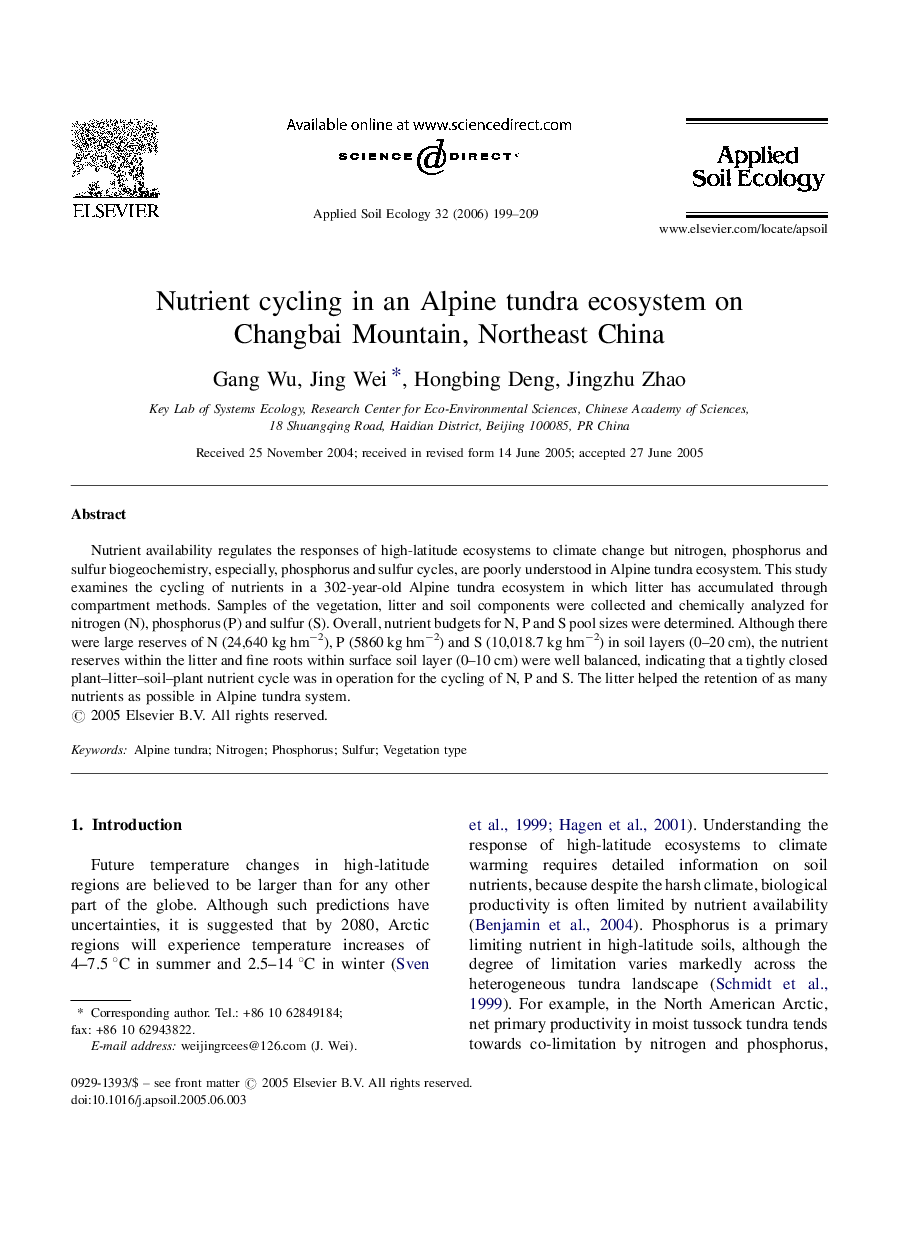| Article ID | Journal | Published Year | Pages | File Type |
|---|---|---|---|---|
| 4383573 | Applied Soil Ecology | 2006 | 11 Pages |
Nutrient availability regulates the responses of high-latitude ecosystems to climate change but nitrogen, phosphorus and sulfur biogeochemistry, especially, phosphorus and sulfur cycles, are poorly understood in Alpine tundra ecosystem. This study examines the cycling of nutrients in a 302-year-old Alpine tundra ecosystem in which litter has accumulated through compartment methods. Samples of the vegetation, litter and soil components were collected and chemically analyzed for nitrogen (N), phosphorus (P) and sulfur (S). Overall, nutrient budgets for N, P and S pool sizes were determined. Although there were large reserves of N (24,640 kg hm−2), P (5860 kg hm−2) and S (10,018.7 kg hm−2) in soil layers (0–20 cm), the nutrient reserves within the litter and fine roots within surface soil layer (0–10 cm) were well balanced, indicating that a tightly closed plant–litter–soil–plant nutrient cycle was in operation for the cycling of N, P and S. The litter helped the retention of as many nutrients as possible in Alpine tundra system.
